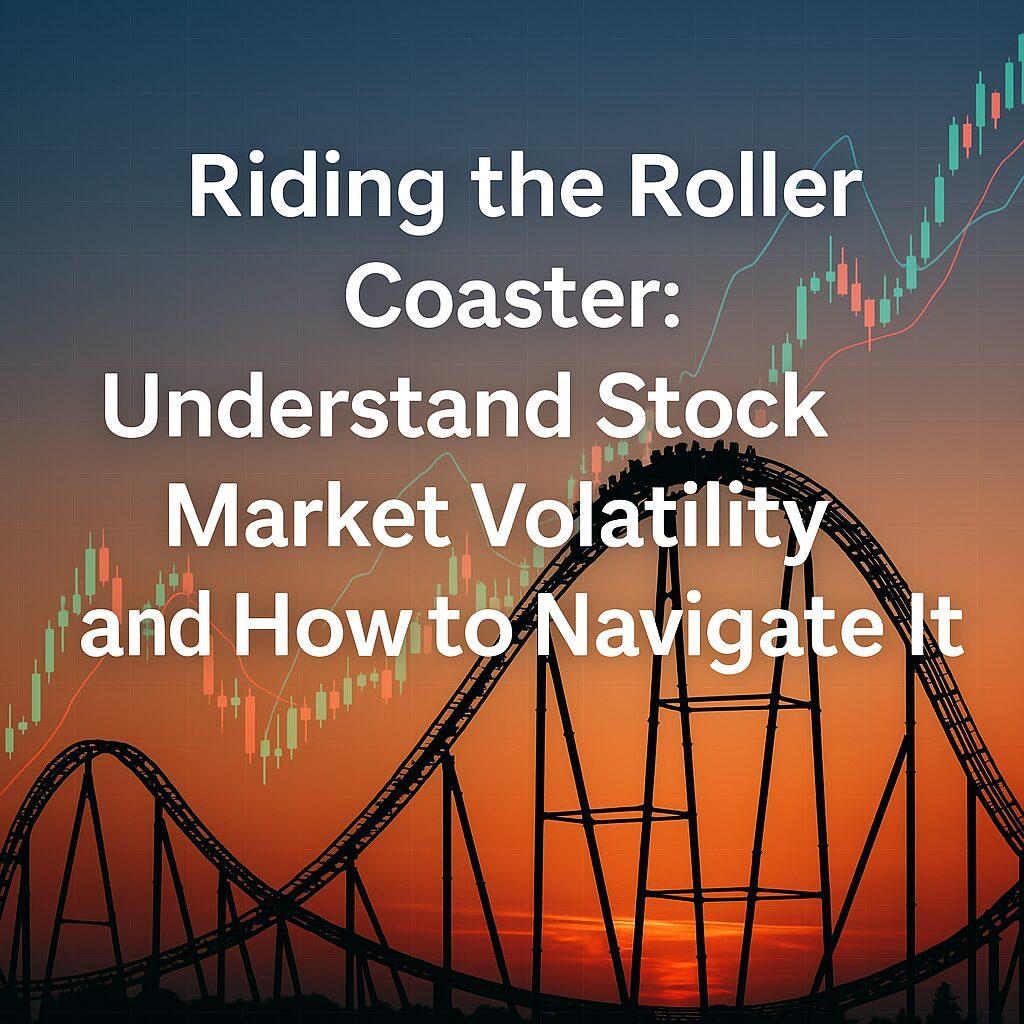Explore what’s behind the 2025 stock market roller coaster — from tariffs to tech sell-offs — and discover smart strategies for navigating volatility. Learn from history, stay grounded, and position yourself for long-term growth.
Riding the Roller Coaster: Understand Stock Market Volatility and How to Navigate It
“Volatility is the price of opportunity.”
That quote rings true in 2025 more than ever. Investors are holding tight through a year that feels less like a market cycle and more like a theme park thrill ride. Stock prices are swinging wildly — from euphoric rallies to gut-wrenching plunges — and everywhere in between.
But beneath the chaos lies a pattern. And those who understand the reasons behind this volatility — and how to respond wisely — may not just survive, but thrive.
What’s Fueling the Stock Market Turbulence in 2025?
A storm of economic and geopolitical factors is disrupting global investor confidence:
- New Tariffs and Trade Tensions: The U.S. administration’s sweeping tariffs on China and certain European sectors sparked a market rout, particularly in manufacturing, retail, and tech-heavy indices.
- Federal Reserve Indecision: With inflation cooling but not yet conquered, the Fed is torn between rate hikes and cuts. This “will-they-won’t-they” policy stance is unsettling markets.
- Tech Sector Shakeout: AI, green energy, and semiconductors soared in 2023–2024 — but lofty valuations are correcting. This sharp tech selloff is dragging down major indices.
- Post-Election Uncertainty: The aftermath of the 2024 U.S. presidential election and ongoing policy shifts are creating volatility, as markets adjust to new leadership, fiscal priorities, and regulatory agendas.
Early Signs of a Rebound: Not All Is Doom and Gloom
Despite the volatility, seasoned investors see reasons for cautious optimism:
– Strong Corporate Fundamentals: Many sectors, including energy, healthcare, and infrastructure, are reporting solid earnings and stable balance sheets.
– Cooling Inflation: CPI reports show inflation gradually tapering, offering central banks more policy flexibility.
– Cash on the Sidelines: Trillions of dollars parked in money market accounts could flood back into equities once confidence returns.
– Layoffs Leading to Leaner Operations: Particularly in tech and logistics, companies are reducing expenses and boosting efficiency — often precursors to future stock rebounds.
Historical Precedents: Volatility as the Seed of Wealth
Periods of high market volatility have always separated the fearful from the farsighted:
- Dot-Com Crash (2000–2002): While thousands of startups imploded, investors who stayed with Amazon or Apple saw life-changing returns.
- Great Recession (2008–2009): Markets bottomed out in March 2009. Those who bought in then enjoyed the longest bull run in U.S. history.
- COVID Crash (2020): The fastest bear market in history (34% drop in 33 days) was followed by an equally aggressive rebound — with tech and digital-first investors leading the way.
What Smart Investors Are Doing in 2025
You can’t control the market — but you can control how you respond. Here are tested strategies to navigate the volatility:
1. Stick to Your Long-Term Plan
Don’t get caught up in day-to-day headlines. Volatility is temporary; your goals are not.
2. Diversify Across Assets
Spread risk by balancing your portfolio across equities, bonds, real estate, and even global markets.
3. Use Dollar-Cost Averaging
Invest a fixed amount at regular intervals. This cushions you against timing mistakes and emotional trading.
4. Rebalance and Reflect
If you’re overexposed to risky sectors (like speculative tech), now’s the time to recalibrate.
5. Keep Cash on Hand
Liquidity is king during downturns — it prevents forced selling and allows you to pounce on deals.
6. Look for Value, Not Just Hype
Focus on businesses with strong cash flow, solid leadership, and a clear competitive edge.
“More money has been lost preparing for market crashes than in the crashes themselves.”
— Peter Lynch
Emotional Discipline: The True Edge
In volatile markets, emotion often becomes the biggest obstacle.
Data shows that investors who panic and sell at market lows miss the opportunity for rebounds.
In contrast, those who stay informed, act strategically, and adhere to sound principles build wealth quietly, steadily, and over time.
Final Thoughts: Preparation, Patience, Perspective
The stock market doesn’t reward perfection; it rewards preparation, patience, and perspective.
Whether this market cycle creates new millionaires or leaves a trail of regret will depend on how each investor reacts. Volatility itself is not the enemy. Impulsive decisions, however, could be.
Disclaimer
This article is intended for informational and educational purposes only and does not constitute financial advice. Always consult with a licensed financial advisor, tax professional, or investment planner before making financial decisions based on your unique situation.





